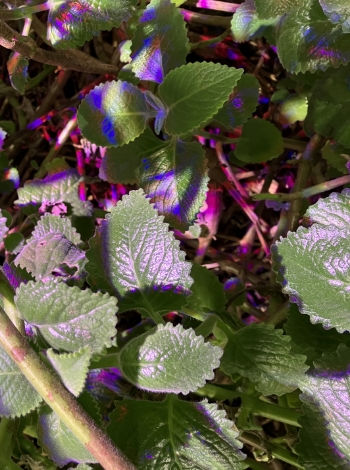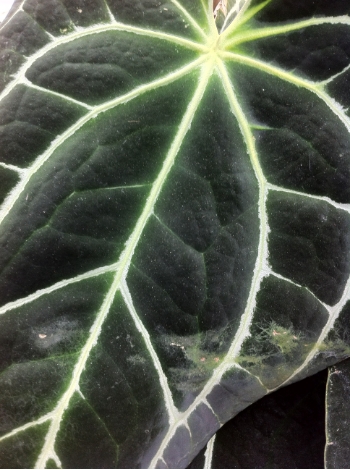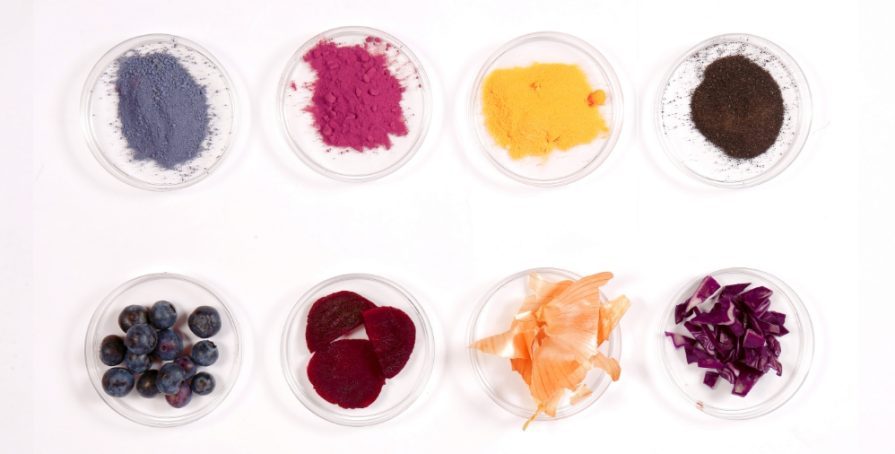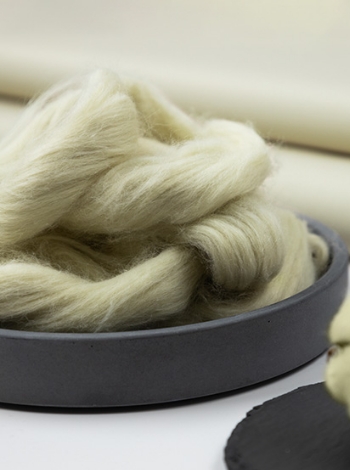Innovations in color chemistry – A detailed perspective on low-impact color in fashion / Part 1 The - Colors - Première Vision Paris - Denim Première Vision - Première Vision New York
In the world of fashion, CMF—Colour, Material, Finish—is a meticulous and multidisciplinary domain. Scientific experts, industrialists, and consultants collaborate to craft hues, textures, and finishes that not only define aesthetics but also communicate intangible messages through tangible design. Color, inseparable from touch, is crucial in a garment’s desirability. Take black (as the physical addition of all colours) for instance—a timeless hue, dominating wardrobes worldwide. While its allure is undeniable, black also symbolises a darker reality: its production often relies on petroleum-derived synthetic dyes, leaving significant environmental and health impacts in its wake.
The dual impact of color: Cultural significance and environmental cost
The cultural importance of colour has been extensively documented, with historian Michel Pastoureau being a notable authority on its historical evolution and meanings. Yet, the environmental and human impact of colour in textiles has only come under scrutiny in recent decades, with initial research emerging during the 1970s and 1980s, amplified by growing awareness of industrial pollution. A key milestone in this field was the recognition of dyeing as a significant contributor to global water pollution, with studies in the 1990s quantifying its impact: The oft-cited figure that textile dyeing and finishing processes contribute to 20% of global industrial water pollution originates from such studies. They also highlighted inefficiencies in dye application, where up to 50% of dyes fail to adhere to fabrics and are instead discharged into effluents.1 These inefficiencies spurred a call for innovation and stricter wastewater treatment protocols.2
Synthetic dyes, first introduced by William Henry Perkin through his serendipitous discovery of the first commercial synthetic organic dye, mauveine, made from aniline, in 18563, revolutionised the industry by offering vibrant and durable hues compatible with synthetic fibres, which now constitute 67% of global fibre production (Textile Exchange). However, these dyes pose severe ecological and human health challenges. Their effluents contain toxic substances, including heavy metals (like lead, mercury, and cadmium), various acids, soaps, and non-biodegradable chemicals. This combination pollutes water, making it hazardous for marine life by obstructing sunlight necessary for photosynthesis and disrupting oxygen transfer. Additionally, these pollutants, if absorbed into the soil, reduce its fertility, and if entering rivers (which is inevitable in most cases), render drinking water unsafe and impacts the whole ecosysten. Synthetic dyes also form harmful by-products, some carcinogenic, when interacting with disinfectants. Up to 200,000 tonnes of synthetic dyes4 are lost annually during inefficient dyeing processes, highlighting the urgency for effective effluent treatment systems.

For a deeper dive into the intricacies of dye chemistry and sustainability certifications, explore this comprehensive article:
Smart Key: How to color garments without leaving a stain on the environment?
What is sure, is that, with a growing awareness of the environmental impact of traditional synthetic dyes, the textile industry is searching for less impactful coloring options, supported by technical and technological progress. This two part exploration covers innovations in natural, microbial and alternative dyes, each presenting new approaches and unique benefits, thanks to research in biomimicry, microbial biology and biotech engineering. We’ll start with natural dyes, harnessing nature’s palette with plant-based, algae-derived, and waste-based dyes.

Natural dyes have a long history, but their widespread use was eventually overshadowed by synthetic alternatives, largely due to economic considerations, the need for consistent replication, and the demands of industrial-scale production. While natural dyes are lauded for their biodegradability and renewable nature, they are not without their environmental complexities. It is crucial to recognise that, despite advancements in mordant technology (which traditionally involved toxic metals like chrome and iron, replaced by alum today), plant-based dyes can still carry potential risks. Some plants used in dyeing may contain allergenic, mutagenic, or carcinogenic compounds.
Moreover, the shift back to natural dyes at an industrial level raises new challenges. The increased demand for plant-based dye sources must be carefully balanced against agricultural land use, as competition for arable land with food production could exacerbate issues of soil depletion and resource scarcity. The effects of climate change further complicate the issue, with unpredictable weather patterns potentially affecting the availability of key dye plants.
For the fashion industry to fully embrace natural dyes, it must look beyond just ‘eco-friendliness’ and adopt strategies focused on circularity. The most promising solutions are those that integrate low-impact approaches and utilise waste streams, ensuring resources are managed with precision and care. Achieving the performance standards of modern fashion, such as color fastness and durability, remains a key hurdle. Innovations, like Alliance Machines Textiles’ Natura DS, represent a step forward in addressing these challenges. This machine, designed to be adaptable for both production sites and small-scale workshops, is an example of how technology not only can significantly lower the environmental footprint of the dyeing process, but also reducing water usage by reusing dye baths up to five times. This nuanced approach ensures that the transition to natural dyes is both viable and responsible, making it a sustainable alternative in the true sense of the word if their cultivation is managed in a long term approach.
Read also: Can natural dyes solve the problem of toxic colorants?
Reviving Plant-based dyes
Plant-based dyes have a deep history in textiles and are now evolving to address industrial standards. Stony Creek Colors, for instance, offers a pre-reduced, plant-based indigo for denim, eliminating the need for petrochemical-based indigo. This indigo is not only aniline-free but also operates in a renewable closed-loop process, highlighting sustainable, high-performance dyeing. Similarly, Couleurs de Plantes focuses on sourcing renewable materials and processing methods that protect the environment, creating sophisticated plant-based colors for luxury textiles. ITMA applicant start-up ColorKIM has developed Merdan® dyes from plants and vegetables, compatible with natural and synthetic fibres. Even the organic waste from their dye production finds use in animal feed, embodying a zero-waste ethos.

Algae-derived pigments
Algae, both micro and macro varieties, are especially interesting because of their rapid growth and their low environmental footprint, as they can be grown in saline water, which does not compete with freshwater sources, reducing water scarcity issues associated with traditional crop-based dyes. Their potential of innovation lies both in the creation of dyes, pigments, and inks as in the food industry and biomaterials. For instance, Algaeing harnesses microalgae in closed-loop systems to create dyes for all types of fibres, compatible with existing textile machinery. Similarly, Living Ink has developed bio-based black pigments from algae, offering UV-stable options suitable for industrial printing processes. Grown Blur by Boqun Huang merges the dyeing of micro-algae with traditional Ikat: The algae are cultivated directly on the fibres via the traditional Ikat weaving technique. The design process of the patterns draws on the principle of photosynthesis, and encompasses both organic micro-organisms and craft heritage.
Waste is a resource
Food waste is another promising source, like Sages London prove it with their wide range of colours, spanning pinks, blues, greens, yellows and purple, made from non edible food waste. Archroma develop their EarthColors® dyes made from agricultural by-products like almond shells, and T-Hues in Sri Lanka utilises tea waste to create their 30 different color dyes. In a zero-waste approach, Ictyos, a French company creating luxury fish skin leather products, produces 2-in-1 tanning and dyes from grape and beer brewing residues.Italian high-end shirting brand Albini turns black rice production wastewater into dye, reducing water consumption by 30–40%, while freeing from fossil-fuel reliance.
Nature Coatings produces BioBlack™ pigments from FSC-certified wood waste, embodying circular innovation in dyeing. These 100% bio-based pigments and dispersions are compatible with various materials, including cotton, leather, and polyester. The company is also researching dope dyeing to enhance the sustainability of textile coloration. Ficus Innovations uses plant waste extracts to dye textiles without the need for salt or chemicals, replacing them by natural enzymes and bio-resins.

Reimagining colour in fashion
“A significant amount of effort from all supply chain stakeholders has been put into phasing out harmful chemistry. Many brands have implemented restricted substances lists (RSLs) defined by organisations like ZDHC and AFIRM and chemical manufacturers have developed chemistries that are non-hazardous and less harmful. Certifications from organisations such as Bluesign and OEKO-TEX help verify the content of these products and are often a requirement of brands. Alongside this compliance with REACH (Registration, Evaluation, Authorization and Restriction of Chemicals) legislation (European Union’s legislation on chemicals) is required to be able to sell products in Europe. However, there is still a long way to go to phase out all harmful chemicals as innovations need to also meet the necessary performance requirements. To achieve a real step change, the industry needs disruptive innovations.”
Textile Processing Guide, Fashion for Good4
While traditional synthetic dyes have supported the textile industry’s scale and vibrancy, their environmental footprint necessitates a shift. The burgeoning innovations in plant-based, algae-derived, and waste-sourced dyes demonstrate that sustainable alternatives are not only feasible but are increasingly meeting the performance expectations of modern fashion. The adoption of these technologies- via R&D for enhanced durability, affordability and compatibility, via global collaboration to standardise best practices and certifications, and via comprehensive lifecycle analysis’s of all alternatives to avoid unintended consequences (like over-reliance on scarce resources)—offers a chance to rethink the expression of color in textiles—blending the beauty of tradition with the urgency of environmental stewardship.

First, one could imagine a shift in the perception of the evolution of color: In luxury for example, the patina of leather goods or in the denim world, the fading of colors are considered as beautiful, or even desirable. Secondly, one should not forget about the humble beauty of undyed fibres: for instance, naturally coloured cottons, forgotten treasures that are now gaining interest ( as seen at Fox Fibre, Organic Cotton Colours, Cotonea and Albini, etc.) can create astonishing yarn-dyeds for exquisite shirting fabrics. In the same idea, the range of hues from alpaca (like In the next article, we’ll broaden the field of dyeing solutions that decouple from oil, with a focus on microbial dyes and recycling technologies for novel pigments. e.g.) and other wools, given the multiplicity of different shades in the sheep, goats and lama’s hair, are a field of exploration for fine tailoring in subtle patterns.
In the next article, we’ll broaden the field of dyeing solutions that decouple from oil, with a focus on microbial dyes and recycling technologies for novel pigments.
For further insights into natural dyes and their role in combating toxicity in textiles, have a look at this eco-focused analysis
Can natural dyes solve the problem of toxic colorants?
1 https://www.mdpi.com/2300-7575/24/2/7#B4-limnolrev-24-00007
2 https://www.scirp.org/journal/paperinformation?paperid=17027
3 https://edition.cnn.com/style/article/perkin-mauve-purple/index.html
4 Ogugbue CJ, Sawidis T. Bioremediation and Detoxification of Synthetic Wastewater Containing Triarylmethane Dyes by Aeromonas hydrophila Isolated from Industrial Effluent. Biotechnology Research International 2011; DOI 10.4061/2011/967925
5 https://reports.fashionforgood.com/wp-content/uploads/2022/01/Textile-Processing-Guide-3.pdf
